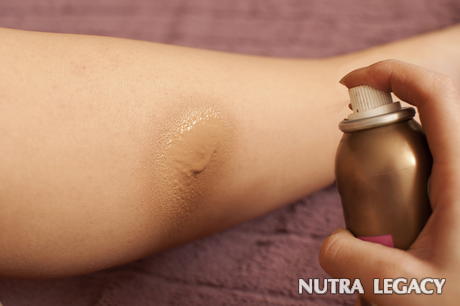Explaining the Process of Scar Tissue Removal

- Scar tissue is the connective tissue that forms the scars we see on the surface of the skin
- To surgically remove a scar, all of the scar tissue must also be removed
- Surgical scar tissue removal carries some risks so the decision to have the procedure should be made carefully
Many of us are plagued by unsightly scars that make us feel less confident about our appearance. While most of these scars can be removed, scar tissue removal can be difficult and expensive. Depending on the how the tissue is removed, the results could vary, as could the discomfort and cost involved. Below is some information to help you learn more about scar tissue removal.
What is Scar Tissue?
While the scar is what is visible on the skin, the scar tissue is the connective fibers that are responsible for forming that scar. Basically, after an injury to the skin, these fibers are formed to help replace the damaged skin cells. However, they are no replacement for fresh, new skin so they end up forming the marks we know as scars.
Methods of Removing Scar Tissue
There are several methods of scar tissue removal. For some types of scars, surgical removal is the only effective option. In these cases, the patient usually has a local anesthetic. The surgeon then cuts out not only the upper layer of skin where the scar is visible but also all of the underlying scar tissue. After the scar tissue removal is complete, the area is sutured. Because these wounds are also likely to causing scarring, most surgeons will take precautions and provide strict wound care recommendations to minimize the risk of scarring. Even if scarring down occur, the scar will be lighter and will be easier to eliminate through less invasive techniques, such as chemical peels or microdermabrasion.
Sometimes when a scar must be removed surgically, a process called expansion is used to help minimize scarring. First, a balloon-like device is implanted under the skin near the scar site. During the course of several visits, a fluid is added to the balloon so it swells. As the balloon swells, so does the skin over it. Once the skin has reached a certain level, the scar is removed surgically and the balloon is removed. Because of the skin expansion, the area where the scar removal area is covered by healthy skin.
Understanding the Risks
With any type of surgical scar tissue removal, risks are going to be involved. One of the risks is usually going to be pain. Even though a local anesthetic is used to numb the area, you will still feel pressure and some other sensations that may be uncomfortable. Once the anesthetic wears off, you will likely have soreness in the treated area. This discomfort is worse with abdominal scar tissue removal than with facial scar removal in most cases.
There are also other risks, including complications from the anesthetic and infection. Following your physician’s orders before and after the procedure can help minimize the risks of both of these problems. Also, choosing a reputable surgeon to do the work is important. Otherwise, you may not be satisfied with the results and may be at greater risk from these complications.
The bottom line is that you have to decide whether surgical scar tissue removal is worth the risk. And the best way to make that decision is by consulting with a plastic surgeon or dermatologist.
The information supplied in this article is not to be considered as medical advice and is for educational purposes only.
|
 19 Jul 2009 19 Jul 2009 |

I WOULD LIKE TO HAVE THE SCAR REMOVAL ON MY KNEE CAP WHERE I HAD KNEE REPLACEMENT SO THAT I CAN BEND MY KNEE. I DID IT ONCE ACCIDNTLY WHEN I SREPPED OUT OF A BOOTH ON WHAT I THOUGHT WAS SMOOTH CEMENT AND IT WAS LIKE A STEP DOWN AND IT BROKE LOOSE AND I COULD DO WHAT EVER I WANTED TO BUT IT EVENTIALLY CAME BACKFebruary 21st, 2010 at 4:52 pm